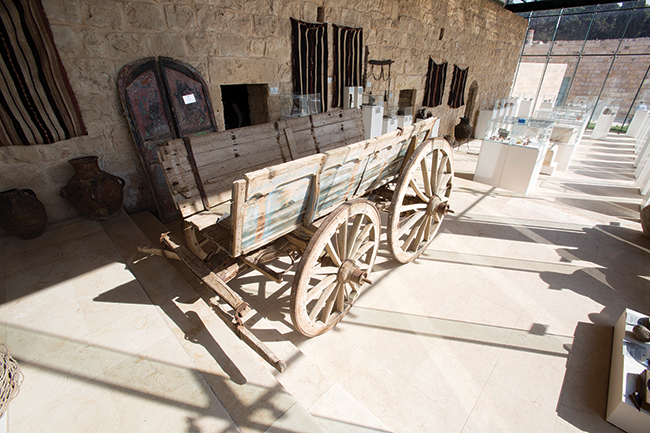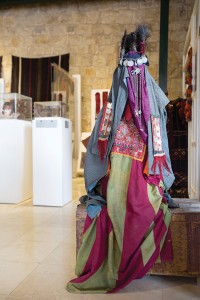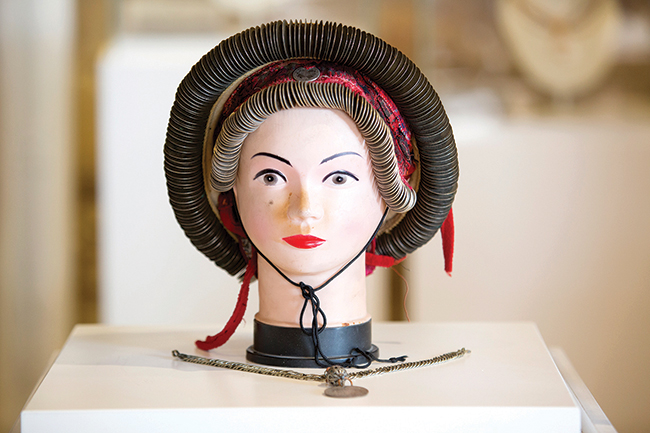
Courtesy of:The Palestinian Museum
The Mourad Fortress Museum displays the Ishaq Hroub Collection. The Fortress is an old Ottoman building that was built as a watchtower for soldiers who monitored Solomon’s Pools, which provided Jerusalem with water and served as a transit path for pilgrims.

In 1985, Hroub started to collect and document social issues in the village, and afterwards he began to collect items to create a museum that would represent Palestine, from the sea to the river, and illustrate the details of Palestinian daily life from the Ottoman Period to the present day. The collection includes many items such as farming, harvesting, and plowing tools, and equipment used specifically for storage.
The museum also documents many professions that were prevalent in Palestinian villages and cities such as carpentry, blacksmithing, and barbering, among others. It also documents the life of Bedouins in the Palestinian deserts and displays the equipment and tools related to each profession.
In addition, the collection includes jewelry and traditional costumes, valuable manuscripts, various types of kitchen utensils, and a cart that was used for transportation from Jerusalem to Damascus.

This special collection provides comprehensive documentation of the tiny details of life in Palestine.
Among the most important displays in the museum is the Taqteeba, which is a 250-year-old headdress that used to be worn by women in Ramallah. Also exhibited is the 250-year-old dirham necklace, which brides, especially from the southern area of Palestine from Jerusalem to the Naqab, used to wear during their henna ceremony. Another valuable piece is a 523-year-old marriage contract.
